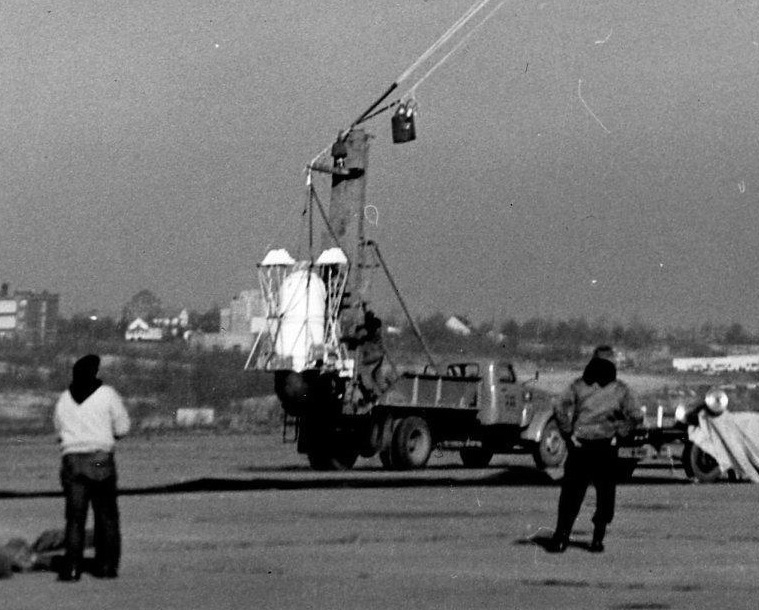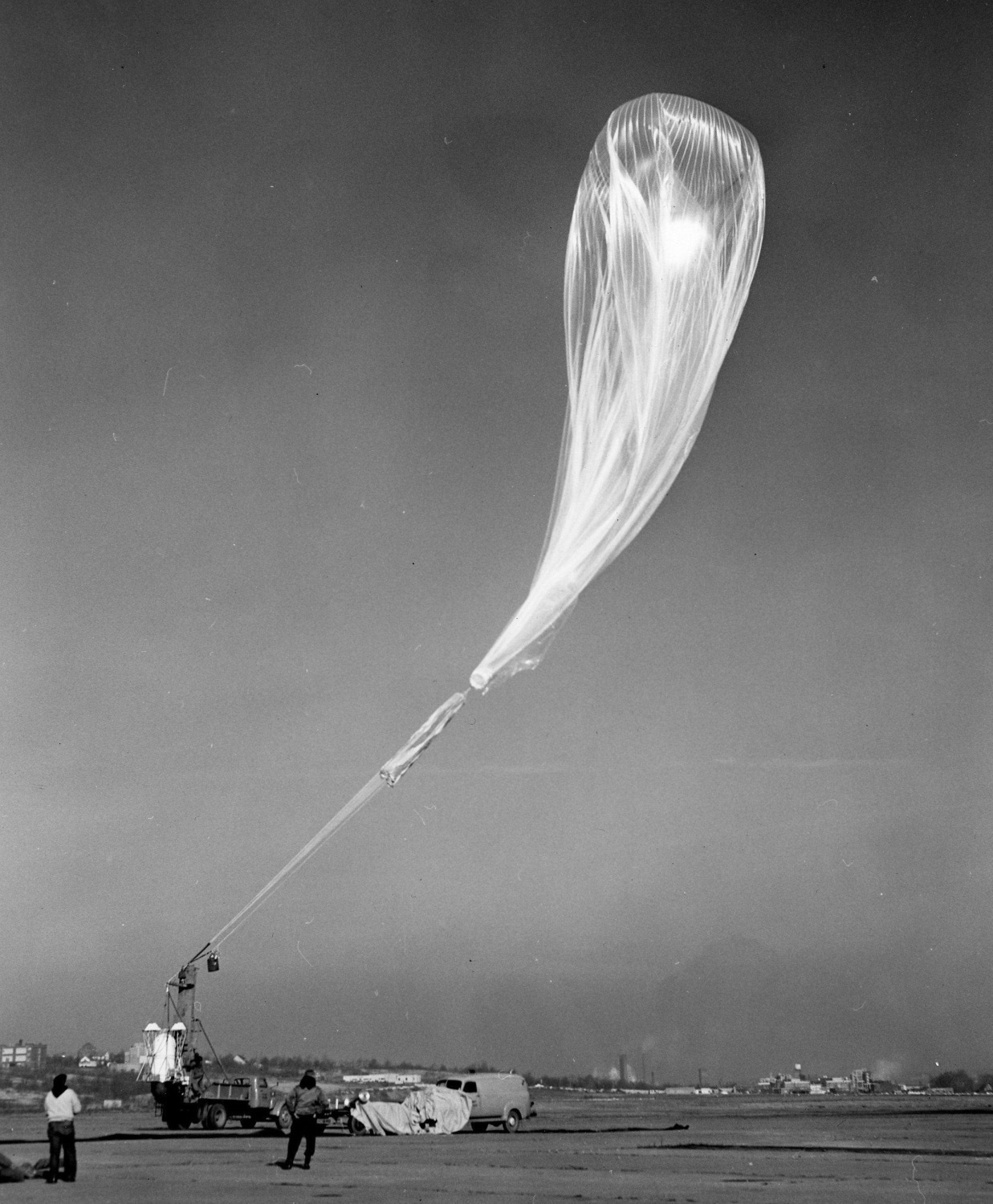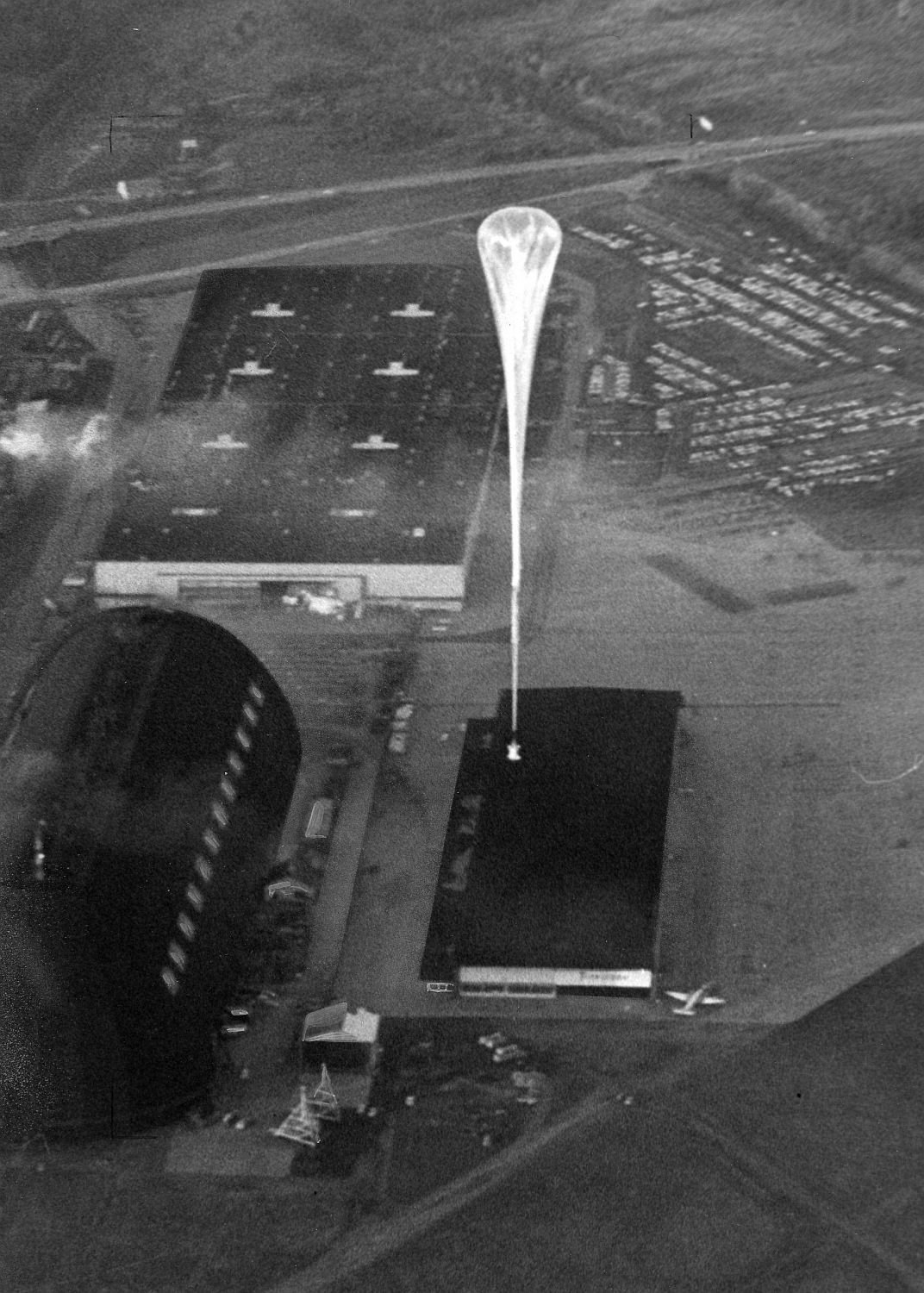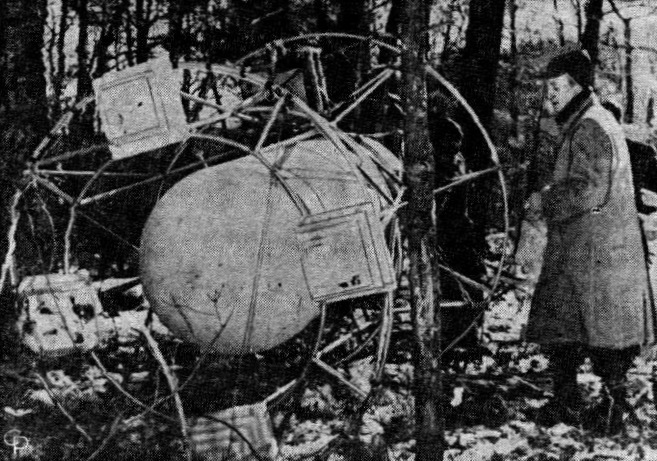Purpose of the flight and payload description
The objective of the flight was to extend knowledge of radar characteristics at stratospheric altitudes by carrying a down-looking radar system onboard a balloon flying at 100.000 feet. The project was managed by Goodyear Aircraft Co. and Winzen Research Inc. under contract with the Air Research and Development Command (ARDC) of the USAF.
The radar system was located in a pressurized cylindrical gondola. The gondola was protected by an external structure made of metal tubes, that served as mounting frame for the equipment as well to protect it at landing by buckling on impact with the ground. At launch and during the flight, the radome pointed downwards but was inverted during descent to prevent further damage. The pictures obtained during the flight were correlated with regular aerial photographs taken by external cameras synchronized with the Plan Position Indicator (PPI) display of the radar system. This cameras were contained in boxes mounted on the side of the radome.
In all, three balloon flights were performed in 1959 from Goodyear's premises in Akron, Ohio.
Details of the balloon flight
Balloon launched on: 12/9/1959 at 8:05 local
Launch site: Akron, Ohio, US
Balloon launched by: Winzen Research Inc.
Balloon manufacturer/size/composition: Zero Pressure Balloon Winzen - 2.000.000 cuft
End of flight (L for landing time, W for last contact, otherwise termination time): 12/9/1959 at 12:50 local
Balloon flight duration (F: time at float only, otherwise total flight time in d:days / h:hours or m:minutes - ): ~ 5 h
Landing site: In New Canaan, Conneticut, US
The balloon was launched by dynamic method using a truck with a rear-mounted frame, at 8:05 a.m. local time on December 9, 1959. The ascent phase went smoothly with the balloon rising at 850 feet per minute. to reach an altitude of 100,000 feet in less than two hours.
Goodyear Aircraft engineers who were to follow the balloon took off from Akron around 9 a.m. in a small airplane. Initial plans were for the balloon and payload to land somewhere in Pennsylvania, but strong winds knocked it off course, more than 450 miles toward New York. As they approached Poughkeepsie, engineers radioed the Federal Aviation Administration about the balloon off course and at 12:50 p.m. sent a signal to automatically separate the gondola from the balloon. However, they lost sight of him shortly after the parachute deployed while descending toward the neighboring state of Connecticut.
The deflated balloon descended at Poughkeepsie, meanwhile, Goodyear engineers contacted Connecticut authorities and told a state dispatcher that the crew had lost track of the gondola, but that under no circumstances should the public be allowed to approach. to the team once on the ground. Also, local newspaper photographers should not be allowed to approach.
The gondola eventually landed on Mohawk Mountain, a ski area in the 4,000-acre Mohawk State Forest in Connecticut. Robert Bailey, a carpenter who lived in the Cornwall Hills, noticed the descending object around 1:30 p.m. "He looked like a man on a parachute," he said. "So of course, I went looking for him." He and his friend Herb Gray walked through the woods for about an hour until they found the 1,000-pound object. "It was crushed against an oak tree," Bailey told a reporter. "There were parts of it all over the place."
The men were unaware that this was a top-secret mission, so they pulled some of the items out of the forest and loaded them into the back seat of Bailey's car. Connecticut police stopped the car as it descended from the mountain and officers recovered the instruments before Goodyear Aircraft engineers arrived. The next day, it was necessary to use an excavator to open a 2-mile road through the forest so that a truck could enter and retrieve the gondola. Meanwhile, another team set about extracting the balloon from trees in upstate New York. Engineers returned the damaged equipment to Akron for analysis as newspapers across the country published articles about the panic on the East Coast.
Despite the bumpy course of the flight, the mission was a success as the balloon managed to capture radar images of the Earth's surface from the stratosphere.
External references
- A chronology of missile and astronautic events Washington, U. S. Govt. Print. Off., 1961. Pag. 113
- Local history: That UFO was from Akron Beacon Journal, Dec 8, 2019 (via Archive.Org)
- Mistery solved The Billings County Pioneer, December 31, 1959 Pag. 6
- Who's ballooney now? Barrytown Explorer, 21 December 1959, Page 1
14364If you consider this website interesting or useful, you can help me to keep it up and running with a small donation to cover the operational costs. Just the equivalent of the price of a cup of coffee helps a lot.





